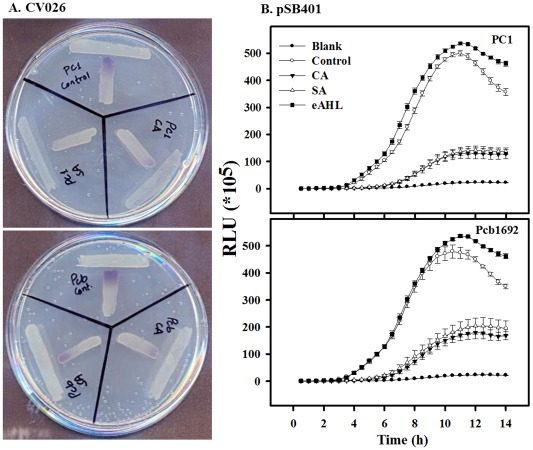Figure 4.

Effects of cinnamic acid (CA; 0.25 mg/mL) and salicylic acid (SA; 0.21 mg/mL) on the production of quorum sensing (QS) signalling molecules by P ectobacterium aroidearum PC1 and P ectobacterium carotovorum ssp. brasiliense Pcb1692. (A) Purple colour exhibited by CV026, as response to N‐acyl‐homoserine lactones (AHLs) produced by PC1 (top) or Pcb1692 (bottom) that were grown with (control) and without non‐lethal concentrations of CA or SA. (B) Intensity of luminescence produced by E scherichia coli pSB401 induced by supernatants of strains PC1 (top) and Pcb1692 (bottom) grown with or without non‐lethal concentrations of CA or SA. Luminescence (250 ms) and absorbance (600 nm) were measured every 30 min for 14 h, and the relative luminescence (RLU = LU/OD 600 nm) was calculated. Blank was E . coli pSB401 grown in the absence of supernatants of Pectobacterium strains, and also E . coli pSB401 was supplemented with exogenous N‐(β‐ketocaproyl)‐l‐homoserine lactone (eAHL) at 100 nm. Each data point represents the mean ± standard error (SE) of eight replicates per treatment of one experiment, representative of two independent experiments with similar results. OD, optical density; LU, light units; RLU, relative light units.
